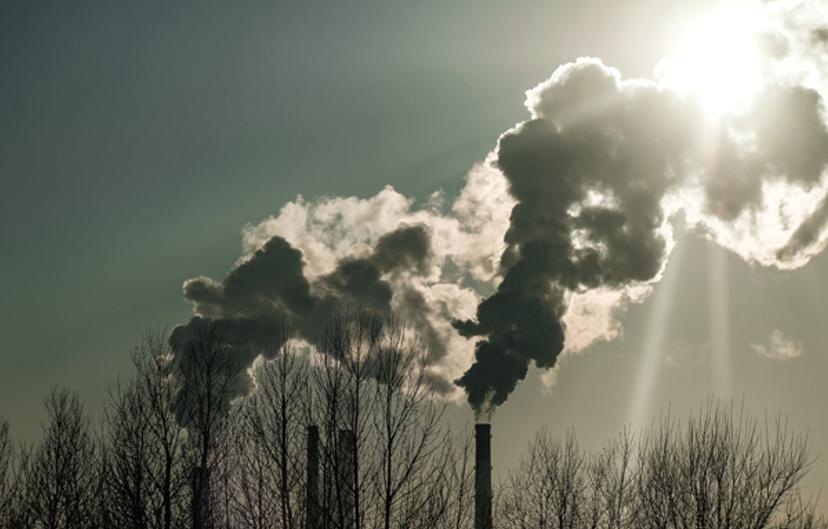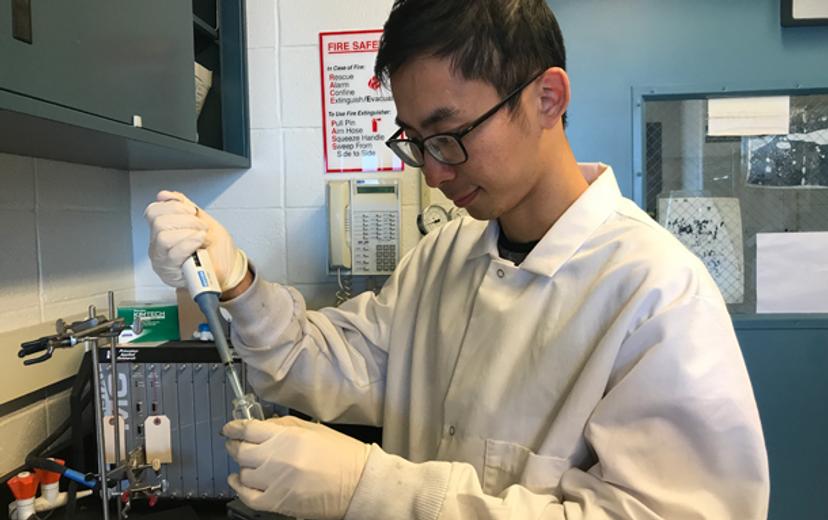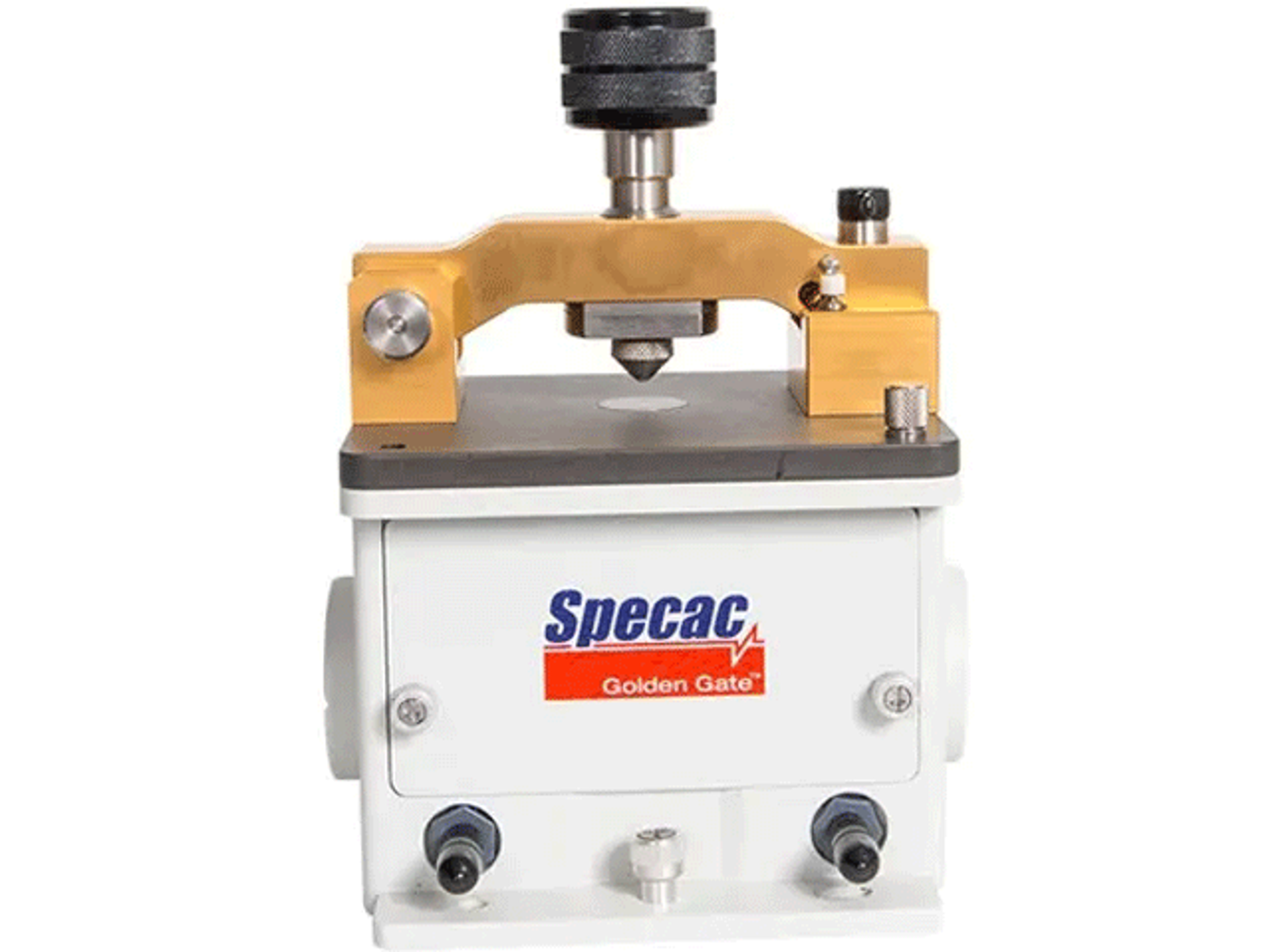Novel Material Offers Solution for Renewable Energy
Learn how scientists at Columbia University are developing new materials for combined carbon dioxide capture and conversion
3 Oct 2018
Professor Alissa Park, Director of Lenfest Center for Sustainable Energy, The Earth Institute, Columbia University, New York, is leading one of the largest international efforts in carbon utilization. Park’s work investigates sustainable conversion of energy sources, including carbon capture, its storage and its utilization. In this SelectScience® feature we look into important considerations for renewable energy research and hear from Ming Gao, a Ph.D. student in the Park group, about the team’s work on materials for combined carbon capture and conversion.
The planet has seen an accumulation of atmospheric carbon dioxide (CO2) from various sources, such as fossil fuel powerplants, as well as emissions from cars and planes. The increase in this greenhouse gas is a concern for climate change, making the search for ways in which atmospheric CO2 can be reduced and stabilized an important challenge to address. Many research groups in this field are working on methods to capture atmospheric CO2 as well as CO2 from point sources, such as power plants, however, there remains the issue of storing and converting this gas into energy. The steps following CO2 capture — including regeneration of the capture material, CO2 compression, as well as transport of the CO2 to the site of conversion and storage —each require energy, meaning that the carbon footprint of this whole process can also be very large. Here, the Park group is working to eliminate this extra energy expenditure by developing materials that both capture and then directly convert CO2 into chemicals and fuels.

Novel materials for combined carbon capture and conversion
Research in the Park lab is focused on the development of innovative carbon capture materials that can also host subsequent electrochemical conversion of CO2 into target products, such as carbon monoxide and methane.
During electrochemical conversion, an overpotential is applied with a catalyst to convert the captured CO2 into target products. Typically, potassium bicarbonate is used as the electrolyte for the electrochemical conversion of CO2, however, the solubility of CO2 in potassium bicarbonate is low. As a result, using potassium bicarbonate limits the amount of CO2 supplied to the reaction site, and consequently CO2 conversion. Research in the Park group takes a different approach, with the aim of developing CO2 capture materials that can also be used as the electrolyte for electrochemical conversion of the CO2. To achieve efficient carbon capture and conversion, the material must have the capability to capture and convert CO2 without changing temperature, while also regenerating the material for further carbon capture.
Park’s current research investigates nanoparticle organic hybrid materials (NOHMs). NOHMs can be synthesized in various forms, including liquid-like solvent, solid sorbent or gel-like materials. The gel-like NOHMs worked on in the Park group can be mixed with a solvent and salt to make an electrolyte. NOHMs are created by tethering polymers onto silica nanoparticles and their chemical properties can be altered by changing the size of the nanoparticle or changing the polymers used. For example, polymers with many amine groups enable better carbon capture, while polymers with more ether groups are good for the desorption of CO2. This has enabled the group to design NOHMs that allow optimal carbon capture, subsequent conversion of CO2 to chemicals and fuel, and material regeneration.

Analyzing NOHMs
Ming Gao is one of the key members of Park’s team who has worked on this project over the last four years. Throughout the development of NOHMs, it is important to analyze the material’s structure as well as its performance for CO2 capture and conversion. For this, FTIR is an invaluable tool that Gao uses “from the first to last step”. FTIR is first used to identify the bonding types of the NOHMs, to provide structural information about the material. It is then used to identify any changes that may occur to the NOHMs after CO2 capture, CO2 conversion, and multiple cycles of capture and conversion. The latter is particularly important to ensure that the electrolytes do not degrade after just a few cycles of the reaction.
In his research, Gao assesses carbon capture capacity in situ using the Specac Reaction Cell Golden Gate™ ATR FTIR sampling accessory. The sealed chamber of the Golden Gate’s reaction cell enables control of the input of gasses and pressure. This can be used to measure the effects of different gradients of CO2 pressure on the NOHMs’ ability to capture and convert CO2. From this, researchers in the Park group can estimate how much CO2 has been captured and also how fast CO2 capture occurs in the NOHMs, helping them to identify the best performing materials.
Gao comments that the Reaction Cell Golden Gate™ ATR “is very easy to use and very robust – it has been used for the last seven years and still works perfectly well.” Gao also highlights that “testing time is very short,” which enables new ideas to be evaluated quickly.
Future research
Research in the Park lab has already proved that the NOHMs enable the process of combined carbon capture and conversion, showing that NOHMs provide a superior electrolyte for CO2 conversion compared to conventional potassium bicarbonate and that the integrity of this electrolyte is maintained after several cycles. The group has also identified that NOHMs can be used to tune the selectivity of the products of the CO2 conversion, while collaboration with the Argonne National Laboratory and NIST (National Institute of Standards and Technology) has identified that NOHMs form fractural structures when dissolved in water and salt, an important factor in conductivity as well as carbon diffusion and conversion.
Looking to the future, Gao tells SelectScience of the group’s hopes that NOHMs will further the field of renewable energy by providing a more effective system to reduce and utilize CO2.
Further research will focus on improving the efficiency of combined carbon capture and conversion using NOHMs, as well as understanding the fundamental science behind the process, which in turn can be used to help develop better NOHMs. Gao also highlights that the field of carbon capture and conversion is very interdisciplinary, involving scientists specializing in process engineering, carbon capture, carbon conversion, polymers and physics. With this in mind, Gao expects to see more collaborations that will help to better address climate change issues in the near future.
Find about research at the Lenfest Center for Sustainable Energy and learn more about the Golden Gate™ ATR Accessory from Specac Ltd.

